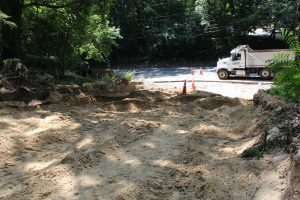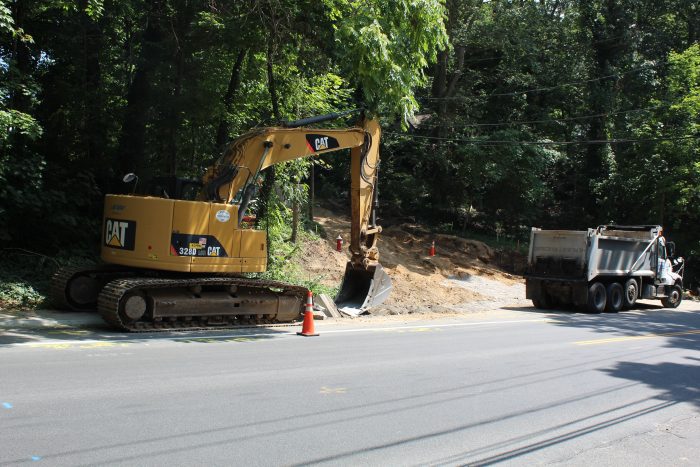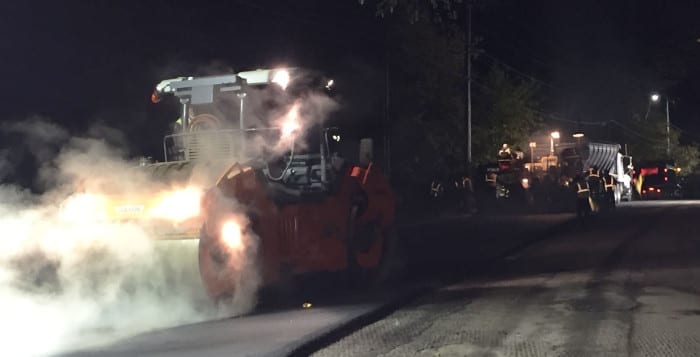After a roadway closure spanning nine months, construction resumed last week at the intersection of Arlington Avenue and State Route 25A.
The construction project signals progress and a cooling of tensions between the Village of Port Jefferson and the New York State Department of Transportation. The initial roadway obstruction was created in September 2021 as part of the DOT’s sidewalk initiative along 25A. Under the original design, a sidewalk was added through the intersection along the pavement and changes were made to the grade, causing vehicles to get stuck at the bottom of the slope.
 Seeing this as a public safety hazard, village officials closed down the intersection to traffic, igniting an intergovernmental dispute between the village and DOT.
Seeing this as a public safety hazard, village officials closed down the intersection to traffic, igniting an intergovernmental dispute between the village and DOT.
Recently, travelers along the 25A corridor noticed significant digging, uprooting of pavement and movement of dirt. Stephen Canzoneri, public information officer for DOT Region 10, detailed the progress of the reconstruction efforts.
“The New York State Department of Transportation is working to address longstanding terrain issues at the intersection of Arlington Avenue and State Route 25A in the Village of Port Jefferson and expects work to be completed by the end of the summer,” he said in an emailed statement.
 Responding to the ongoing construction, Joe Palumbo, the village administrator, offered thanks to DOT and to state Sen. Anthony Palumbo (R-New Suffolk) for expediting the reconstruction efforts. The Palumbos are not related.
Responding to the ongoing construction, Joe Palumbo, the village administrator, offered thanks to DOT and to state Sen. Anthony Palumbo (R-New Suffolk) for expediting the reconstruction efforts. The Palumbos are not related.
“The Village of Port Jefferson is delighted to see active construction taking place to redesign the intersection of Arlington and West Broadway,” Joe Palumbo said in an email. “The village would like to thank Senator Palumbo for his help in getting this project started and NYSDOT for seeing the need for the redesign and executing the new plan.”
To read more about the background to this dispute, see The Port Times Record’s March 24 story, “PJ Village clashes with DOT over Arlington Avenue obstruction,” available on the TBR News Media website.







